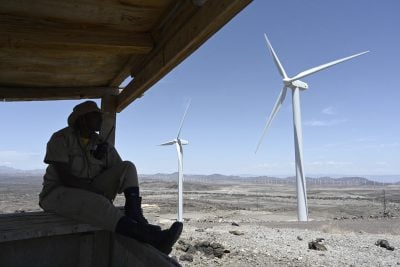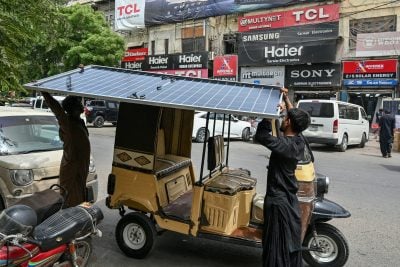Strong economic growth in almost every part of East Africa is driving something of a construction boom at present. New housing developments are a common sight in the main cities and the skylines of Nairobi and Dar es Salaam are beginning to change. Yet it the ongoing process of regional integration that is driving many projects, with road, rail and port development ensuring that goods and people can move more easily within the region and from its port to the rest of the world.
In January, the final section of the Northern Corridor in East Africa was completed when the 124km stretch in Uganda between Mbarara and Katuna was opened. Developed with financial support from the EU, the road connects eastern Democratic Republic of Congo, Burundi, Rwanda and Uganda with the Kenyan port of Mombasa.
At the project’s opening ceremony, Uganda’s President Yoweri Museveni said: “We should be able to maintain this road ourselves and make sure it lasts and continues to serve us very well. I am sure we are not expecting that we will be going back to the EU to seek for more funds to maintain it.” The road is one of the biggest projects within the overall plan to improve transport connections within the East African Community (EAC).
An even more ambitious transport project could be on the verge of proceeding. The governments of Rwanda and Tanzania have pushed for the construction of a new railway from Rwanda to the Tanzanian Central Line and on to Dar es Salaam.
In January, the two governments joined with Burundi to finalise a deal on the project, with construction due to begin in 2014. The Tanzanian Minister for Transport, Omari Nundu said: “We hope to develop a railway system that connects the agricultural, mining and industrial hubs of the three countries to the port of Dar es Salaam.”
Existing roads from Tanzanian ports to the Great Lakes are affected by heavy rainfall, making it difficult for fuel tankers to complete the journey. However, with a price tag of $4.7bn in today’s prices, the three countries face an uphill task in securing funding.
At the same time, Tanzania and Uganda have proposed the construction of another west to east railway that would run 880km from Kampala to Musoma, Arusha and then on to the port of Tanga. In the face of determined opposition by environmental groups, they have agreed to route the line 100km south of the Serengeti National Park.
The two governments have signed a deal with the China Civil Engineering Construction Corporation (CCECC) to develop the project and the Chinese company has already pledged to complete a feasibility study into the venture by April. Extensions into other parts of Uganda and also into South Sudan are planned.
Dar es Salaam has long dominated the Tanzanian port sector but current delays are caused by a lack of capacity at the existing container terminal. A second container terminal is planned but government officials have given the strongest indications yet that the more northerly port of Tanga will be developed as the country’s main container port in the very long term. Indeed, handling capacity as high as 4m TEU is planned by 2028, more than 10 times the current installed capacity at Dar es Salaam.
The director-general of the Tanzania Ports Authority, Ephraim Mgawe, said: “The capacity utilisation at the existing port is high, over 90%, which calls for additional berths and terminal facilities. The required expansion to meet projected demand is not recommended at the existing location due to high costs in, DGvolved.”
One of Tanga’s biggest advantages is its location close to Kenya. As with much of the planned transport infrastructure with the EAC, the railway and port projects are designed to promote regional integration but will also trigger regional competition as the ports of Dar es Salaam and Mombasa continue their historic rivalry while also having to turn their attention to new developments at Tanga and the proposed port development at Lamu in Kenya.
Despite recent modernisation, the port of Zanzibar is unlikely ever to regain its former prominence but road infrastructure on the islands is benefiting from a major upgrade. The government of semi-autonomous Zanzibar has set a target of tarmacking 90% of all roads on the islands of Unguja and Pemba by 2014.
The figure reached 70% in January as a result of funding from the African Development Bank, which has financed the upgrade of five roads over the past eight years, most recently the 12.75km Amani-Dunga Road on Unguja.
Want to continue reading? Subscribe today.
You've read all your free articles for this month! Subscribe now to enjoy full access to our content.
Digital Monthly
£8.00 / month
Receive full unlimited access to our articles, opinions, podcasts and more.
Digital Yearly
£70.00 / year
Our best value offer - save £26 and gain access to all of our digital content for an entire year!

 Sign in with Google
Sign in with Google 




